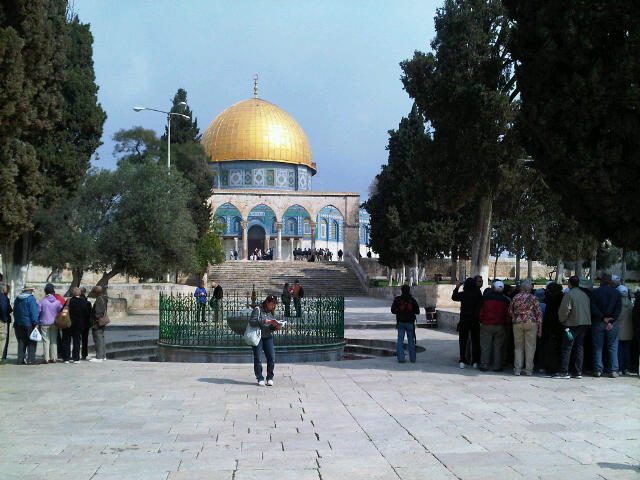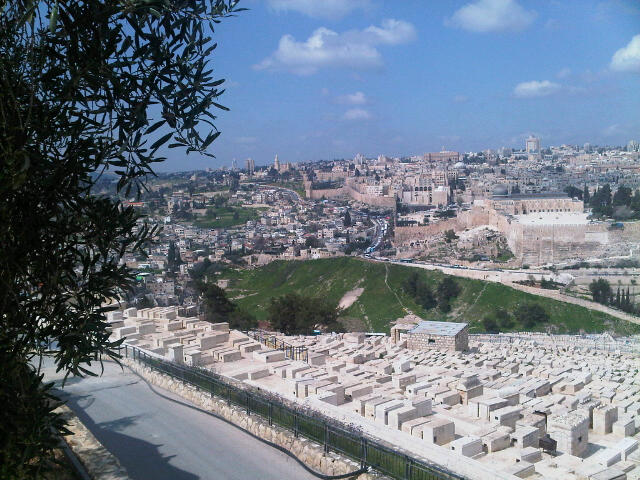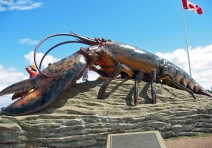WORLDWIDE TRAVEL NEWS ARTICLE
ISRAEL
The City of Jerusalem
For full information about crossing at this point please visit
http://www.amman2jerusalem.com/useful3.php
As it was getting dark, I jumped into a taxi and made my way to the St. George Landmark Hotel in the Old City of Jerusalem. This hotel has just been completely refurbished and makes an ideal base from which to visit the many inspiring sites that Jerusalem has to offer. To see more about the hotel visit www.stgeorgelandmark.com .
After a comfortable night’s sleep I started my whirlwind visit to this religious nucleus for Jews, Christians and Armenians as well as being the third most sacred city in Islam, Jerusalem. The city, resting on the original hills of the City of David and surrounded by a wall over four kilometers long with seven gates, 34 towers, and a citadel (the Tower of David), is divided into four residential quarters.
The Moslem Quarter
My first stop was in the Moslem Quarter. This is the largest quarter in the old city and my visit commenced on Temple Mount, site of the Dome of the Rock and the Al-Aqsa Mosque.

The Dome of the Rock
The shining Dome of the Rock was built over a sacred stone as a shrine for pilgrims. It is octagonal in shape with 60 feet high outer walls and a golden dome that is a city landmark.
The Al-Aqsa Mosque, rebuilt in 1035 and has had several restorations since then, is part of a complex of religious buildings in Jerusalem known as either the Majed Mount or Al-Haram ash-Sharif (the Noble Sanctuary) to Muslims and the Temple Mount to Jews. The Al-Aqsa Mosque is the largest mosque in Jerusalem where around 5,000 people can worship inside and outside the mosque. It is a mixture of architectural styles including some from when the Crusaders held Jerusalem, during which time the mosque was used as a palace and called the Temple of Solomon, in the belief that the mosque was built on the site of the original temple.

The Al-Aqsa Mosque
The Armenian quarter is the smallest quarter of the Old City. The Armenians settled in Jerusalem in the 4th century CE for religious reasons, and the St. James Cathedral was built in the 12th century. This church later became the centre for the Armenian people in Israel. It is one of the most beautiful churches in the country and is built upon the remains of a Byzantine church. At the centre of the church is a dome resting on four pillars, through which the sun shines and sheds light on the beautiful wall paintings.
There is also a seminary for Armenian priests and the Armenian Museum, which presents the cultural and national history of the Armenian people, located in the Armenian quarter. The quarter houses the Armenian Patriarchate, a building of major importance to Armenians.
The Christian Quarter
More than 40 churches, monasteries, and hostels that were built for Christian pilgrims are crammed into this quarter in the heart of which stands the Church of the Holy Sepulchre or the Church of the Resurrection. This, according to Christian tradition, was the site on which Jesus was crucified and buried following his final walk along the Via Dolorosa, or the Stations of the Cross. The Via Dolorosa begins at the courthouse, which was located at what is now the Lions’ Gate, and ends at Calvary Hill where the Church is now located. I, like many tourists and Christian pilgrims, followed the Via Dolorosa to the Church.
There are several sites that are important to the Christian tradition inside the Church of the Resurrection, including the Stone of Anointing, the tomb, and the rotunda.
The market, one of Jerusalem’s most popular tourist attractions, is located in the Christian quarter and is a noisy, colorful market where you can buy decorated pottery, candles, souvenirs, ethnic costumes, mats, rugs, beads, jewelry, glass lamps and decorative items. The merchants call out their wares and the food stands emit tantalizing aromas. One of the fun things about this market is that you are expected to bargain for wares, and if you insist, you can also bargain shopkeepers down from their original price.
The Jewish Quarter
The Jewish quarter is the main residential area for Jews in the old City. This quarter also contains the Western Wall, or the Wailing Wall, which is a holy place for the Jews as it was part of the Temple and close to the Holy of Holies within the Temple.

The Wailing Wall
The Jewish quarter also contains interesting archeological sites such as the Burnt House, the remains of a house from the time of the destruction of Jerusalem by the Romans 2000 years ago. Also there is the Cardo is a typical Roman street built in the 6thcentury consisting of stores situated between two rows of columns. You can still see the remains of the tall columns, arches, and stone floor in the Cardo.
Jerusalem
East of the Old City is the Mount of Olives from where you get a great panoramic view over the city. It is also where there are other important Christian sites including several churches including three Churches of the Ascension and Abraham’s Monastery.

The View from Mount Olive
Apart from the holy places throughout the Old City, there are several charming sites that are well worth visiting. One example is a promenade along the tops of the walls from where you can look out over the Old City and the New City. These tours along the walls are also available as a night-time experience when the city’s lights sparkle and create an unforgettable fairytale vista to complete your visit to this very special city.
GETTING THERE
Ben Gurion Airport is located near Highway 1, the main Jerusalem-Tel Aviv Highway.The airport is accessible by car or public bus. Israel Railways operates a train service from the airport to Jerusalem but the journey time is approximately two and a half hours. The taxi stands are located outside the arrivals building.
You may also like to read

OMAN - A STORY OF THREE CITIES
To expose the delights of this too often overlooked country, Tour-smart has combined the talents of two of it's best writers.

CANADA - LOBSTERS & LEVIATHANS
James Litston introduces Tour-smart followers to the edible delights and admirable scenery of Atlantic Canada's New Brunswick Province.


Comments